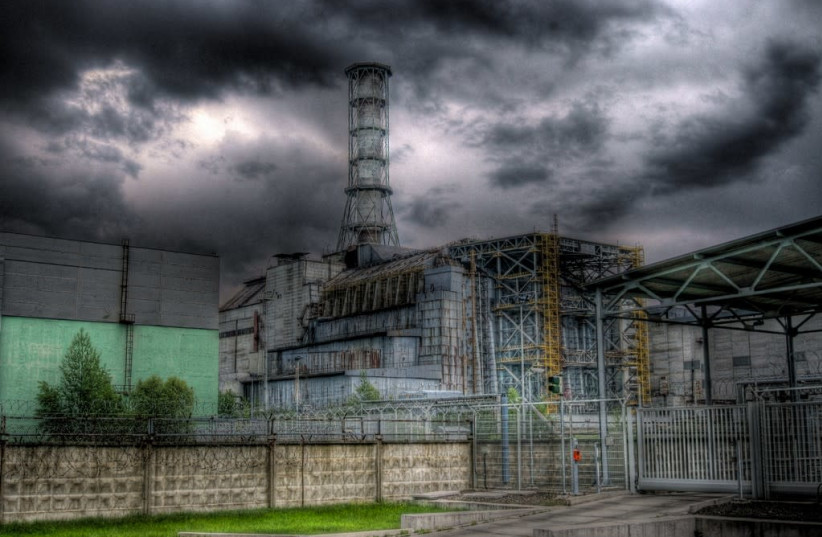Dogs in Chernobyl nuclear plant are genetically distinct from others - study

The mysterious dog populations in the Chernobyl nuclear power plant are genetically distinct from the other dog populations near the nuclear disaster site in Ukraine.
The genetic makeup of dogs living at the Chernobyl nuclear power plant is distinct from other dogs that live kilometers away from the site, as was revealed in the first study presenting the characterization of a domestic species at the power plant.
The study's findings were published in the peer-reviewed journal Science Advances last Friday.
The researchers focused on studying the free-roaming dog populations living in the Chernobyl nuclear power plant itself, the nearby Chernobyl City 15 kilometers away and the city of Slavutych 45 kilometers away.
Wildlife populations in the area were significantly reduced
The Chernobyl power plant disaster was one of the single worst nuclear disasters in human history, with only the 2011 Fukushima nuclear disaster coming close.
Centered near the city of Pripyat, once home to some 50,000 people, in what is now Ukraine, the disaster occurred after a safety test went wrong, making it unstable and leading to a chain reaction, exploding the reactor core. The resulting massive radioactive cloud spread for around nine days throughout the region.
The exact death toll is unknown, due in large part to how widespread the radation's effect was and how long it will last considering the damage continues to this day.
This includes the continued presence of radioactive isotopes in the area, as well as the wildfires caused by radiation-contaminated forests catching fire in the dry seasons, with the resulting fire and winds spreading the radiation further.
The potential danger the site still holds due to the remnants of radioactive contamination was reaffirmed in 2022 following the start of the Ukraine-Russia War, with Russian forces repeatedly targeting and interfering with the site.
In particular, the area most severely affected by the nuclear disaster is a 2,600 square kilometer area around the power plant known as the Chernobyl Exclusion Zone (CEZ).
How did the Chernobyl nuclear disaster impact the local wildlife?
The nuclear disaster severely impacted the CEZ's ecosystem. However, in the almost 40 years since the Chernobyl disaster, much of the local wildlife has begun to bounce back, likely due to a lack of humans around.
However, there is still the question of how the radiation impacted the animals in the area. Did thinning numbers in the initial disaster cause there to be a lack of mating partners among different animals, causing a shallower gene pool? Did the radiation cause different mutations? Did the overall disaster and lasting environmental consequences alter migration behavior?
These are all questions that hadn't been answered much. But this study sought to change that by studying the various free-roaming dog populations in the region.
Interestingly, the dogs in Chernobyl are actually very mysterious because no one knows where they came from. They just somehow appeared there. Though it is widely thought that they descended from pets left behind in Pripyat, no one actually knows for sure – especially since in the early days after the nuclear disaster, Soviet forces went about culling all the abandoned pets to prevent them from escaping the CEZ and spreading radioactive contamination.
Evidently, some dogs managed to escape and were likely cared for by radiation clean-up crews and tourists. But there is still so much that is unknown and unclear about the dogs of Chernobyl. They seem to live everywhere, many of them even within the power plant itself. Overall, the three main locations home to dogs seemed to have been Chernobyl City, the power plant and Slavutych, a city in nearby Belarus where many displaced Chernobyl workers were moved to after the disaster.
An effort was made to figure out more details about the dogs in 2017 with the launch of the Chernobyl Dog Research Initiative after it was noted that the dogs seemed to be growing in number. Over the course of three years, researchers went about taking samples of the different dogs to better study them.
The researchers were able to build off this, taking advantage of the 302 samples collected by the Chernobyl Dog and Research Initiative to gather genome information. They then compared genetic data to see similarities and differences to answer the question of whether the dog populations were any genetic differences.
While there were three seemingly genetically distinct and independent populations there, there was also some occasional overlap between the populations.
Further, there were also genetic differences within these three populations, such as from the dogs residing in various different parts of the power plant.
The research also found that there were considerable differences in genome diversity. Dogs within several parts of the power plant, for example, showed increased evidence of inbreeding or starting from a very small group in the first place. The Chernobyl City dogs, by contrast, seemed to have the most genetic diversity.
The researchers then tested the genetic distinction between the Chernobyl dogs and other dog populations, purebred and free-breeding. To do this, the researchers compared their data to other dog populations from 12 different countries, including from elsewhere in Ukraine.
This showed some interesting findings.
For starters, most of the dogs in Slavutych had different purebred dogs as their closest genetic neighbor, indicating that most of them don't come from the area.
But what stands out the most is that the dogs in the Chernobyl nuclear power plant really are genetically distinct from the Chernobyl City and Slavutych populations.
To explain what this means, if these groups of dogs were each incredibly diverse, with genetics linking them to other dogs elsewhere, it would indicate that the dogs were just a collection of random wild dogs that were once owned by humans and are now living ferally. This could mean that these were dogs that all just kept moving there over time.
But that isn't what's happening here. Rather, these populations, genetically distinct and independent, are actually living in the Chernobyl area, breeding and starting families over the last nearly four decades.
But there are still some mysteries here. For starters, why are there such significant genetic differences between the Chernobyl nuclear power plant dogs compared to the Chernobyl City dogs? Salvutych is significantly farther away, so that's one thing. However, Chernobyl City is just 15 kilometers away. Why did this happen?
One possibility is that perhaps this is the impact of radiation leftover by the nuclear disaster. There is some possibility of this happening. After all, the radiation has caused mutations in other wildlife, typically in the form of shorter lifespans and cataracts.
But more research needs to be done to figure this out. The impact of Chernobyl's nuclear radiation on the surrounding wildlife has been a subject of considerable scientific interest for decades and studying it has proven very difficult. This study, regardless of whether radiation is actually involved in these genetic differences, will likely prove very informative for further research in this field down the road.
Jerusalem Post Store
`; document.getElementById("linkPremium").innerHTML = cont; var divWithLink = document.getElementById("premium-link"); if (divWithLink !== null && divWithLink !== 'undefined') { divWithLink.style.border = "solid 1px #cb0f3e"; divWithLink.style.textAlign = "center"; divWithLink.style.marginBottom = "15px"; divWithLink.style.marginTop = "15px"; divWithLink.style.width = "100%"; divWithLink.style.backgroundColor = "#122952"; divWithLink.style.color = "#ffffff"; divWithLink.style.lineHeight = "1.5"; } } (function (v, i) { });


